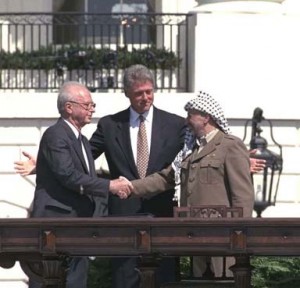According to Wikipedia, on August 30, 2006, Pharrell Williams himself said on BET that the new song he’d produced would not only show off his gangsta side, but also tackle the issue of racial conflict in Los Angeles between African Americans and Hispanics and call for racial unity.
The song he was talking about was “Vato,” by Snoop Dogg featuring B-Real (the guy with the nasally voice from Cypress Hill) as the voice of the Hispanic community. Observe and enjoy.
http://www.youtube.com/watch?v=QKKvIg2uYHw
Does the song deliver? The answer, right here —
If by “deliver” you mean “have an inexplicable appearance by Edward James ‘Adama’ Olmos in the video,” then it does. If you mean “tackle the issue of racial conflict in Los Angeles between African Americans and call for racial unity?”
The resounding answer, I think, is “Sort of. I guess.”
I mean, Snoop sure made a song that Latin guys who hate black people can get behind, but I’m not sure that “Hey, let’s all shoot [black people] together and then give Snoop Dogg a lethal injection” was what Pharrell had in mind.
And from that day on, there was never a disagreement between an African American and a Latin guy ever again.
For serious, though, this is a reasonably well-crafted attempt at a cross-cultural event, but it was cross-cultural marketing of this one rapper, not nearly as meaningful cultural exchange between two communities. And we’ve seen stuff like this before:
Unless, of course, you put a great deal of importance in people just appearing together and making symbolic cultural handshakes. Some would say that in itself is a meaningful act, and I would be hard-pressed to claim they are totally wrong.
FUN FACT: if you can’t figure out the radio edits, the thing that Snoop gets from the trunk of his car before he “started firing” was his “gun.” Tricky, I know.
By way of closing, here’s the alternative, animated video. Does this video deliver? You be the judge!
Stay tuned to Overthinking It for more Great Moments In Racial Discourse.


I think the song has a much more depressing message about race relations (probably inadvertently). It’s kind of unusual for a pop song because the chorus exists both in the song and in the song’s narrative. A classic example of this is the Motown song “Beat Me to the Punch,” where each time the chorus comes around, it’s referring to a different punch: asking the person’s name, asking him/her to go out, and then ending the relationship.
The chorus of “Vato” on one hand is just the chorus, but on the other, it’s what Snoop Dogg hears “an ese say” while he “mobs in LA.” (?) So where’s the pessimism? Well, the first two verses are about how violent Snoop is, and how he don’t give a f___ so the fact that the chorus is basically the latino community saying “Snoop is one violent dude who doesn’t give a f___” makes perfect sense. The third verse is different: it’s a qualified plea for peace. But the final chorus is the same. As far as B-Real is concerned, Snoop is still the same violent, f___-withholding dude that he ever was. It’s a potent symbol for the intractability of racial prejudice.
I mean, if you want it to be.
Yeah, he even refers to them as “my enemies.” The song’s conclusion is a lot darker than I said at first.
The commonality it does reach is one of shared struggle — as in, we both have to put up with this incessant violence, and we both need to earn respect in a way that society outside our neighborhood doesn’t, and it connects us.
But it’s the kind of connection that, say, an Armenian and an Azeri have when they get out of Central Asia — when you’re still in the shit and shooting at each other, it doesn’t really do much good to acknowledge that you’ve got shooting each other in common.
But Snoop Dogg doesn’t even do _that_. There isn’t even the WWI Germans-and-British-leaving-the-trenches-for-a-
soccer-game camaraderie, because Snoop Dogg doesn’t even really kill anyone specific. He just pretty much kills anyone who messes with him. Without some sort of compartmentalization (like you might be forced to develop in a war), it seems unlikely he’d even be able to relate to the other people’s stories if they shared them — at least from the perspective of his character.
I mean, he shoots first. He pretty much murders those guys, because he “wouldn’t be the G that I am” if he didn’t. And he relishes that.
That’s not the kind of story that you can really share in a way that builds bridges.
“Hey, I just shoot people, because it’s what I do!” “Oh! Me too! Awesome!”
. . .
“So, do you wanna . . .”
“Awkward.”
On the bright side, on purely aesthetic grounds it’s one of the better Snoop Dogg songs in recent memory. I love that rapped-over-nothing intro (just regular rapped in the animated version, which is way less cool), and he just sounds like he’s got more invested in this one than in, say, Drop it Like it’s Hot. And B-Real is always a welcome presence.
By the way, you want proof that this song has not advanced the cause of racial tolerance? Check out the comments people have been leaving about the videos on youtube.
Well, let’s not forget the last verse. “I’m really tryin’ ta change my ways.” Etc. I think, ultimately, the character realizes he is a messed up mutha fugga and that the relations between his “team” and that of the Hispanic one need to change. But he’s at a loss- it has been like that and just IS like that, and everyone involved simply cannot conceive of another way to act or exist. Using the chorus the last time is a way of saying that, in spite of the deep desires of Snoop’s character, what happens in the chorus is still going to happen all the time.
I don’t think it really IMPROVES race relations, but it points the difficulties out. And I think the live video does a better job, because even though the two rappers have their man-hug and stuff, they still sing the chorus.
If this is what constitutes racial discourse, may I suggest “Black Korea” or “Horny White Devil” by Ice Cube, off the Rainbow Coalition-tastic classic ‘Death Certificate?’ They’re both so full of understanding and love!
This song doesnt bring peace in the streets of L.A.? As a chicano living in long beach i find this song to be a diss to the largest Hispanic gang in long beach- LONGO calo term for long beach. This song probably cost multiple peoples lives- black and brown. thanks alot snoop. fucking joke. MUTHERFUCKER WEARING HIS COLORS ALL THREW THE VIDEO AND REPPIN HIS SET WHILE DISRESPECTING WSLONGO. FUCK THAT BITCH. ILL PROBABLY SMOKE A TALL SKINNY BLACK MOTHERFUCKER IN LONG BEACH BECAUSE THAT BITCH ASS “VATO”.